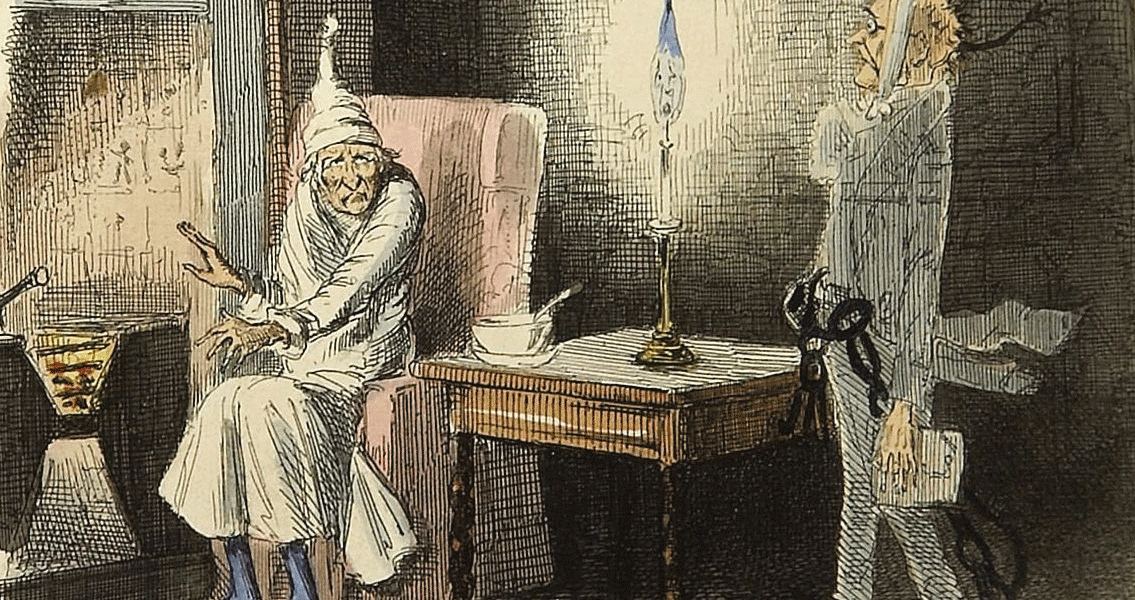<![CDATA[It might not be the most critically lauded of Charles Dickens' works, but 'A Christmas Carol' is probably the most well known. The tale of a miserly skinflint finding the Christmas spirit through supernatural intervention is one firmly entwined into Christmas tradition. It has been the subject of a plethora of parodies, adaptations and tributes that prove one of Dickens' most simple allegories, was also one of his most potent. First published in 1843, A Christmas Carol was the most successful book published in Britain that winter. By Christmas it had sold six thousand copies, and its popularity continued beyond the festive season. A big part of its success comes in the simplicity of the story, making it easily adaptable. Within two months of its first publication eight stage versions were already in production. The story, set in Victorian London, focuses on Ebenezer Scrooge, a money obsessed man with no emotional attachment to anybody. His sole focus is financial gain, and he views both exploitation and intimidation as valid means to achieve that end. As one would expect, he views Christmas with particular cynicism, describing it as "a time for finding yourself another year older, and not an hour richer." The opening section of the book, set during the week of Christmas, provides numerous examples of his greed and lack of empathy. His clerk, Bob Cratchit, is forced to work in an office with no heating. Scrooge's nephew, Fred, invites his uncle to a Christmas party, but is rudely turned down with a vicious 'Bah! Humbug!" Two men collecting for charity also visit Scrooge, and are met with similar vitriol. That evening Scrooge is visited by the ghost of his dead partner, the equally greedy Jacob Marley. Marley tells Scrooge he has been condemned to wander the earth in chains, as punishment for his greedy life. He informs Scrooge that he will be visited by three spirits over the next three nights, after which Scrooge collapses into a deep sleep. The main section of the story focuses on the visitation by the three spirits - the ghosts of Christmas Past, Christmas Present, and Christmas Yet to Come. The ghost of Christmas Past takes Scrooge on a journey through his life. He revisits his school days, and his apprenticeship with a merchant named Fezziwig, a kindly man who seems the antithesis of Scrooge. Most significantly, the reader learns of Scrooge's engagement to Belle, a woman who ultimately left him because his love for money was greater than his love for her. Next, Scrooge is visited by the ghost of Christmas Present. The spirit takes Scrooge through London, showing him how Christmas will unfold that year. Scrooge is taken to the house of Cratchit, where he witnesses the clerk's large and loving family celebrating Christmas enthusiastically despite their limited means. The first sign of Scrooge softening comes when he sees Crachit's crippled son, Tiny Tim, whose warmth and humility shock him. Finally, Scrooge is visited by the ghost of Christmas Yet to Come. Scrooge witnesses vague scenes that he ultimately realises are the non-caring response of the community to his future death. Scrooge begs with the spirit to alter this fate, vowing to change his ways, before waking up with a start, safely tucked up in bed. Snatching the chance to redeem himself, Scrooge awakens on Christmas Day full of Christmas spirit. He attends his nephew's Christmas party, and sends a giant Turkey to the Cratchit household, also raising Bob's salary. He treats Tiny Tim as if he were his own son, and makes copious donations to the poor and needy. As well as a sentimental celebration of the Christmas spirit, the book also engages with one of the key themes of Dickens' work - the plight of the poor during a rapidly industrialising Britain. Scrooge himself represents the alienating affects of wealth, an increasing number of people who placed money above everything else. At the time of writing A Christmas Carol, Dickens was heavily concerned about the obstacles facing children. Increasingly, he felt that children's whole lives were being decided in their childhood. Those who were born into poverty frequently turned to crime to survive. Impoverished children also lacked access to good education, something Dickens believed could prevent their decent into delinquency. Before leaving Scrooge, the ghost of Christmas Present shows him two children in chains, who he names 'Ignorance' and 'Want'. This is surely a thinly disguised reference to the social issue that was preoccupying Dickens at the time. One could even interpret Scrooge's reform as another demonstration of the importance of education - the 'lessons' he receives from the four spirits result in him reforming his ways and becoming a better person. A Christmas Carol lacks the detailed social commentary of works such as 'Hard Times' or 'Oliver'. At its heart it's a story for the festive season, an optimistic allegory about the potential for people to reform their lives and start to care for each other. It had a poignant meaning for Dickens at the time of writing, but its continued popularity shows it's just as affecting for modern readers. Photo Credit: Wikimedia Commons Philip V. Allingham.]]>
A Christmas Carol
